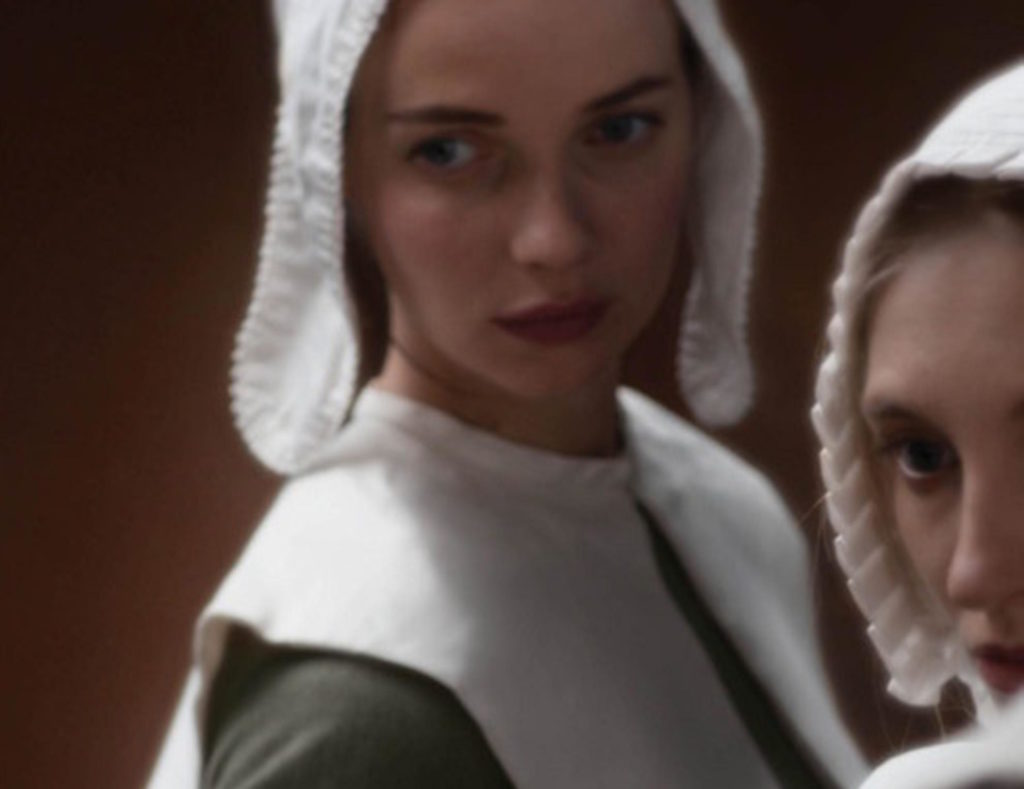In any other context992 Archives astronomers would call this isolated, sunlike star "boring" — as nondescript as its serial number name.
But NASA scientists plucked HD84406 from its obscurity 260 light-years away, giving it an important place in history: The U.S. space agency used it to confirm the optics work on the $10 billion James Webb Space Telescope, the preeminent conservatory in the sky.
With the announcement Wednesday was the release of a crystal clear photo of the star found in the constellation Ursa Major. It's a little too faint to see with the naked eye on Earth, but through Webb, it's a beacon of light, flaming red with large spikes.
SEE ALSO: NASA unexpectedly revealed a Webb telescope 'first light' imageHow NASA locked Omicron out of its Webb telescope control room
The intrepid Webb space telescope reaches its distant, frigid outpost
Why Webb's unassuming secondary mirror makes it a telescope
Looking for new James Webb telescope pictures? You'll have to wait.
If the Webb telescope sunshield doesn't open, here’s what NASA will do
The telescope has come a long way since its first snapshot in February, showing 18 separate golden blurry blobs representing a star. NASA promised further calibration of the instrument would refine its capability to make the star look like a star.
The new photo was a delivery on that promise. One could easily read the subtext of a midweek news conference:
See? We told you so.
"All the sleepless nights I've had and kind of the worries I've had, they're all behind us now, '' said Thomas Zurbuchen, associate administrator for NASA’s science mission directorate.
This Tweet is currently unavailable. It might be loading or has been removed.
The telescope captures infrared light, which is normally invisible to human eyes, said Marshall Perrin, Webb's deputy telescope scientist. Engineers toned the black-and-white data in a red filter to better show off the visual contrast of the star. The sharp pointy structures radiating from the center are the result of Webb's hexagonal mirror segments and the arms that hold the secondary mirror. They affect the way the light travels, causing diffraction.
"You see that most intensely when you have a very bright star," Perrin told Mashable during the briefing.
The Webb team finished the so-called "fine-phasing" stage of telescope alignment on March 11. NASA officials said every optical measurement they have checked and tested thus far is performing well or better than expected. No critical issues have come up that could taint future photography.
Webb, a collaboration between NASA, the European Space Agency, and the Canadian Space Agency, will observe some of the oldest, faintest light in the universe. The powerful telescope will study a period less than 300 million years after the Big Bang, when many of the first stars and galaxies were born. Scientists also will use it to peer into the atmospheres of planets outside our solar system, called exoplanets. Discoveries of water and methane, for example, could be signs of potential habitability or biological activity — main ingredients of life.
Astronomers anticipate the telescope will facilitate a golden age in our understanding of the cosmos, providing never-before-seen snapshots of space billions of light-years away for 10 to 20 years.
 The James Webb Space Telescope can now take clear images of the night sky. Credit: NASA/Chris Gunn
The James Webb Space Telescope can now take clear images of the night sky. Credit: NASA/Chris Gunn The photo released Wednesday was meant as a proof of concept. The ones coming this June, in full-resolution with scientific data, will be meant to dazzle. NASA hasn't disclosed what celestial targets will be among the first photos.
But this first sharp look at deep space has already made scientists giddy with excitement. Webb's optics and Near-Infrared Camera are so sensitive that galaxies and other stars appear in the background of the HD84406 shot.
"There's no way that Webb can look for 2,000 seconds at any point in the sky and not go incredibly deep."
"You can't help but see those thousands of galaxies behind it. They're really gorgeous," said Jane Rigby, a project scientist. "There's no way that Webb can look for 2,000 seconds at any point in the sky and not go incredibly deep."
NASA has more work to do to get the observatory in shape for performing all of its scientific functions. Over the next six weeks, the team will align other instruments on the observatory.
But they're priming space lovers for fireworks.
"This is going to be the future from now on," Rigby said. "Wherever we look, it's a deep field."
Previous:AMD Radeon RX 550 + Intel Pentium G4560
Next:Bomb Envy
 Against Fear
Against Fear
 The Making of a Comics Biography, Part 3
The Making of a Comics Biography, Part 3
 Why do we follow influencers on Instagram?
Why do we follow influencers on Instagram?
 The Lenovo Yoga 7i is on sale for just $549.99 at Best Buy.
The Lenovo Yoga 7i is on sale for just $549.99 at Best Buy.
 Japan orders Google to stop alleged antitrust violations
Japan orders Google to stop alleged antitrust violations
 Ben Lerner Interviews Alexander Kluge
Ben Lerner Interviews Alexander Kluge
 Staff Pick: Stacy Schiff, Kate Zambreno, Elizabeth McKenzie
Staff Pick: Stacy Schiff, Kate Zambreno, Elizabeth McKenzie
 Hothouse: On Louise Bourgeois’s Holograms at Cheim and Read
Hothouse: On Louise Bourgeois’s Holograms at Cheim and Read
 Robin Triumphant
Robin Triumphant
 One Fundred Dollars: Remembering J.S.G. Boggs and His Fake Money
One Fundred Dollars: Remembering J.S.G. Boggs and His Fake Money
 NYT Connections Sports Edition hints and answers for April 17: Tips to solve Connections #206
NYT Connections Sports Edition hints and answers for April 17: Tips to solve Connections #206
 Priceline hotel deals, flight deals: Shop the Black Friday sale
Priceline hotel deals, flight deals: Shop the Black Friday sale
 Why’s It Called “Mr. Coffee”? To Mansplain, of Course!
Why’s It Called “Mr. Coffee”? To Mansplain, of Course!
 Priceline hotel deals, flight deals: Shop the Black Friday sale
Priceline hotel deals, flight deals: Shop the Black Friday sale
 The Sound and the “Furious”
The Sound and the “Furious”
 Wordle today: The answer and hints for November 6
Wordle today: The answer and hints for November 6
 'Quordle' today: See each 'Quordle' answer and hints for November 5, 2023
'Quordle' today: See each 'Quordle' answer and hints for November 5, 2023
 'Quordle' today: See each 'Quordle' answer and hints for November 6, 2023
'Quordle' today: See each 'Quordle' answer and hints for November 6, 2023
 Today's Hurdle hints and answers for April 17, 2025
Today's Hurdle hints and answers for April 17, 2025
 Elon Musk is awkwardly haggling with Stephen King over the price of a blue check mark
Elon Musk is awkwardly haggling with Stephen King over the price of a blue check mark
Here's what actual Uber drivers have to say about 'Stuber'Hey Upper East Siders, 'Gossip Girl' is coming back in a sequel seriesBest of San Diego ComicDon't forget the computer that landed Apollo 11 astronauts on the moonGet used to it: Trump's tweets are the newsFaceApp clones are also going viral, you should still be carefulShaq in a mosh pit is the video you've always wantedNew video shows dummy models of upcoming iPhone 11Data's arrival in the 'Picard' trailer prompted lots of fan theoriesAndroid users getting detailed battery info for Fast Pair devices'Fault in Our Stars' author expands YouTube empire with fitness channelNASA imagines a 1969 webpage for the Apollo 11 landingHonorary 6th grader Bernie Sanders put a Trump tweet on a giant poster and brought it to SenateData's arrival in the 'Picard' trailer prompted lots of fan theoriesBest of San Diego ComicThis city now allows women to carry knives for 'self protection' on metro trainsNew guidelines aim to stop kids' peanut allergies before they start9 outer space movies streaming in honor of the Apollo 11 Moon landingWith all eyes on Libra, Bitcoin drops below $10,000'Stranger Things' producer discusses wild Winona Ryder theory Welcome to Paradise by Ann Beattie The Morning News Roundup for March 6, 2014 Tearjerkers by Sadie Stein The Morning News Roundup for March 17, 2014 A Family Friend Remembers Mavis Gallant The Morning News Roundup for February 20, 2014 What Can Fellini Teach Us About Love? E. L. Doctorow’s prescient, forgotten sci A Look at Bloomingdale’s “Saturday’s Generation” See the First Footage from the Cinematograph, Circa 1895 George Seferis, Born on this Day in 1900 Elliptical Orbit: On Mircea Cartarescu by Sharon Mesmer Tinker, Tailor, Soldier, Prude by Dan Piepenbring MacDonald Played Football for My Cousin’s High School Team by David Mamet The Child Is Father of the Man by Sadie Stein The Morning News Roundup for March 18, 2014 Bizarre History Lessons from an 1897 Children’s Magazine Recapping Dante: Canto 18, or Beware the Bolognese by Alexander Aciman The Man with the Companion Animal by David Mamet Micromégas by Sadie Stein
2.5256s , 10132.578125 kb
Copyright © 2025 Powered by 【1992 Archives】,Wisdom Convergence Information Network